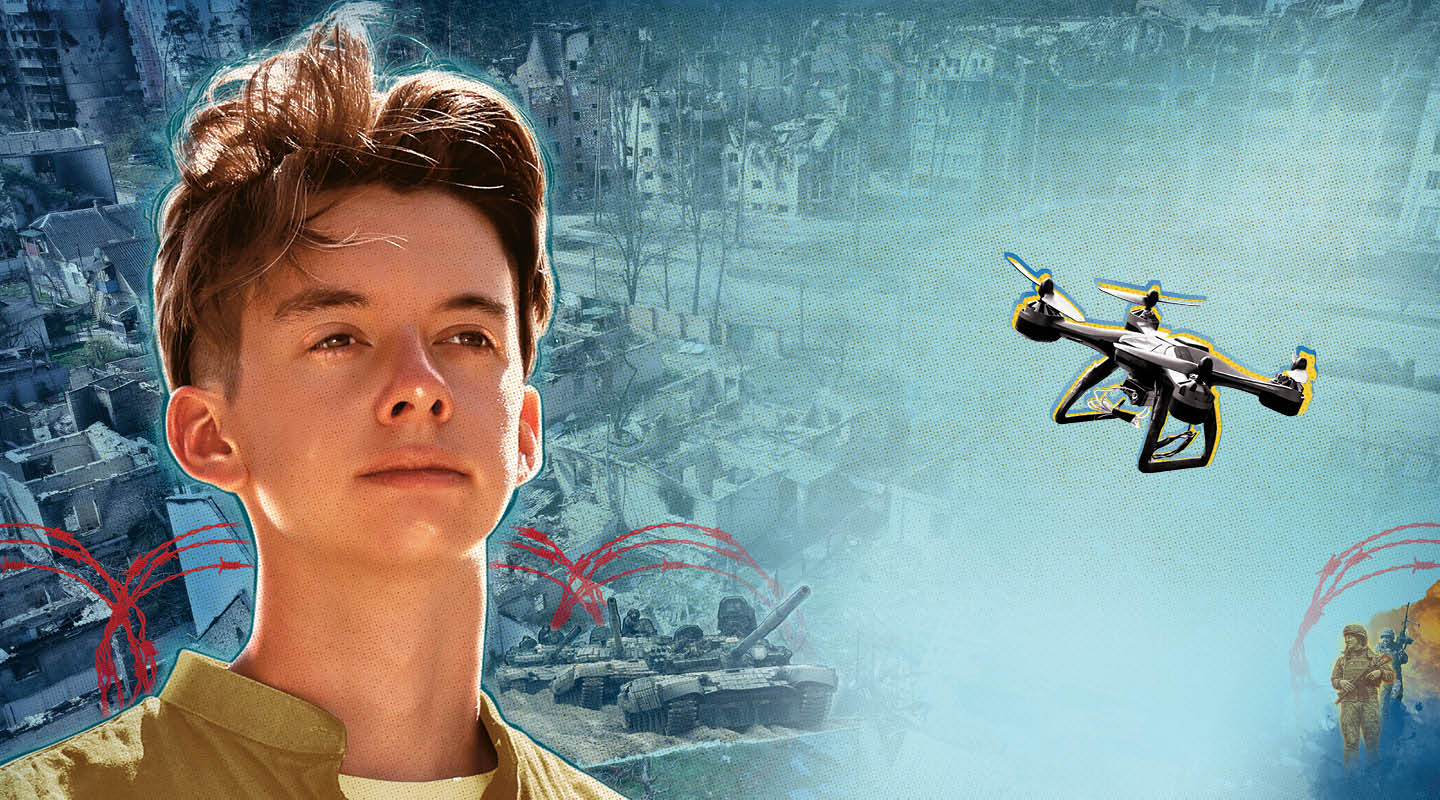Igor Klymenko, 17, and his family huddled together. They were in their dark basement. The sounds of explosions tore through the night.
It was February 24, 2022. That morning, Russia had attacked Ukraine. Bombs had rained down on cities and towns. Missiles had hit military bases. Millions of Ukrainians had run for their lives.
Igor, his younger sister, and his parents had quickly grabbed whatever they could carry. Then they escaped their apartment in Kyiv, the capital city. The family headed to their country house in Vasylkiv. That’s a town about 23 miles away. The home had a basement that could serve as a bomb shelter.
Once there, Igor’s family still wasn’t sure they would be safe. No one slept that night. Bombs fell nearby, making the house shake.
All they could do was hope that they would survive until morning.
Igor Klymenko, 17, and his family huddled together. They were in their basement. The sounds of explosions tore through the night.
It was February 24, 2022. That morning, Russia had attacked Ukraine. Bombs had rained down on cities and towns. Missiles had hit military bases. Millions of Ukrainians had run for their lives.
Igor, his younger sister, and his parents had grabbed all they could carry. Then they left their apartment in Kyiv, the capital city. They went to their country house. The country house was in a town about 23 miles away. It had a basement. The basement could serve as a bomb shelter.
Once there, the family still didn’t feel safe. No one slept that night. Bombs fell nearby. They made the house shake.
Would the family survive the night?
Igor Klymenko, 17, and his family huddled together in their dark basement. The sounds of explosions tore through the night.
It was February 24, 2022. That morning, Russia had attacked Ukraine. Bombs had rained down on cities and towns, and missiles had struck military bases. Millions of Ukrainians had run for their lives.
Igor, his younger sister, and his parents had quickly grabbed whatever they could carry and left their apartment in Kyiv, the capital city. The family headed to their country house in Vasylkiv, a town about 23 miles away. The home had a basement that could serve as a bomb shelter.
Once there, Igor’s family still wasn’t sure they would be safe. No one slept that night. Bombs fell nearby, making the house shake.
All they could do was hope that they would survive until morning.

